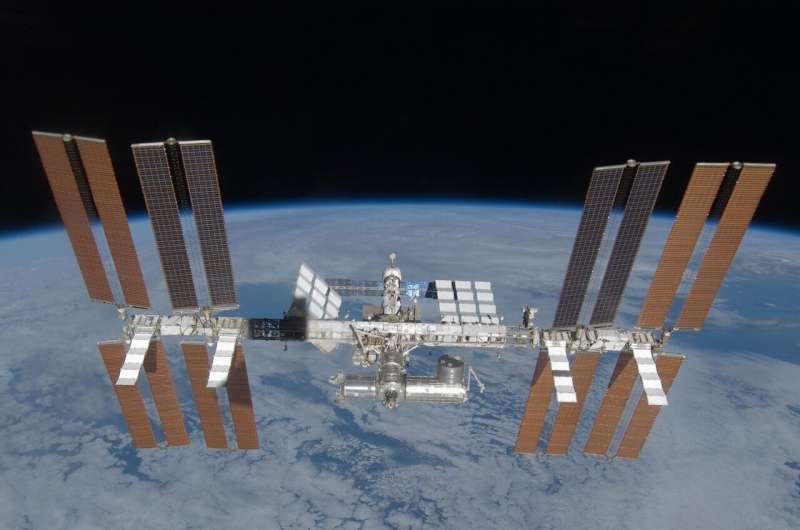
Credit: Pixabay/CC0 Public Domain
Astronauts Suni Williams and Butch Wilmore spent an unexpected Fourth of July aboard the International Space Station, but it was hardly a patriotic display of engineering prowess.
The two NASA astronauts docked with the orbiting laboratory on June 6 for what was supposed to be an eight-day mission, but their return home could be delayed by months in what has become a doomed test flight for Boeing’s new Starliner capsule.
Not only has the spacecraft’s launch with astronauts on board for the first time been repeatedly delayed due to multiple issues, but NASA and Boeing are taking a cautious approach to returning the duo to Earth, largely because five thrusters malfunctioned during docking.
Four of the small engines that steer the spacecraft are now functioning properly, but engineers aren’t sure what caused the shutdown. So they decided to conduct ground tests at NASA’s White Sands Test Center in New Mexico, NASA officials said. The tests will put a Starliner booster through its paces in a simulated space environment.
The delay will also allow engineers to further study a helium leak in the capsule’s propulsion system that was detected before launch and worsened as Starliner hurtled toward the space station, about 250 miles (400 kilometers) above Earth. The gas is used to pressurize Starliner’s propulsion system.
However, the company and the space agency stressed at a press conference earlier this week that the astronauts are not stranded in space and that, if needed, they could board Starliner and return to Earth immediately in the event of an emergency aboard the space station.
“We are not stranded on the ISS. The crew is not in danger and there is no increased risk if we decide to return Suni and Butch to Earth,” said Mark Nappi, Boeing’s Commercial Crew Program manager.
Ken Bowersox, NASA’s associate administrator, said the delay would allow for more data to be collected and that there was no rush to bring the astronauts back. “We have the luxury of time,” he said.
Before launch, NASA had said Starliner’s batteries were designed to last 45 days, but at the press conference it said they were working well and would be designed to last another 45 days. During regular servicing missions to the station, Starliner would remain docked for six months.
NASA and Boeing also won’t have a chance to examine the thrusters or investigate the helium leak during Starliner’s return because the propulsion system is jettisoned before returning to Earth.
Still, the push for ground tests that are expected to take weeks underscored once again how far Arlington, Virginia-based Boeing, the world’s largest aerospace company, has fallen behind SpaceX, Elon Musk’s new company based in Hawthorne, at least in the space station servicing program.
Both companies won multibillion-dollar contracts in 2014 to develop their craft, and since 2020, Elon Musk’s Hawthorne company has carried more than a half-dozen crews aboard its Crew Dragon capsule to the station, while Boeing has only successfully completed two remote flights, including a first that failed to reach orbit and a second in May 2022 that docked with the orbiting lab.
The current mission with astronauts on board was scheduled to launch last year but was delayed by the need to replace the flammable tape widely used in Starliner and a second problem with the parachute system that will slow its descent for a ground landing in the Southwest.
The May 6, 2015, launch date has been postponed several times, first because of a faulty valve on the Atlas V rocket that launches Starliner into space. The working rocket is built by United Launch Alliance, a joint venture of Boeing and Lockheed Martin.
The additional launch dates were missed due to a helium leak, likely caused by a single faulty seal. Software fixes were developed to work around the problem, but more leaks occurred after launch. However, NASA and Boeing officials say the craft has 10 times more helium than it needs to return to Earth.
Boeing reportedly faces $1.5 billion in cost overruns from Starliner, even as it continues to deal with the fallout from two crashes of its 737 Max 8 planes in 2018 and 2019.
The company plans to plead guilty to fraud charges over allegations it misled regulators who approved the new, larger version of the 737, including about the level of flight training pilots would need, according to the Associated Press.
Boeing also announced this week that it plans to acquire Spirit AeroSystems, a key supplier it spun off in 2005 as part of its plan to outsource production of its commercial jets. Spirit supplied the fuselage for the Alaska Airline Max 9 that suffered a panel failure Jan. 5 as it headed to Ontario International Airport in San Bernardino County. Boeing’s chief executive said the acquisition was “in the best interest of the traveling public.”
Meanwhile, SpaceX last month won an $843 million NASA contract to build a spacecraft to guide the International Space Station out of orbit so it can burn up in the atmosphere when it is retired in 2030.
Bloomberg reported last month that the privately held company was now valued at a record $210 billion following a tender offer by the company to insiders that priced the shares at $112.
If Starliner is certified, decommissioning the space station would leave the spacecraft with only a handful of scheduled service flights, sparking speculation that Boeing could end the program.
However, the company says it plans for Starliner to service the Orbital Reef space station being developed by Jeff Bezos’ space company Blue Origin.
Los Angeles Times 2024. Distributed by Tribune Content Agency, LLC.
Quote:NASA astronauts spend unexpected July 4 aboard the International Space Station (2024, July 8) retrieved July 10, 2024 from https://phys.org/news/2024-07-nasa-astronauts-unexpected-july-international.html
This document is subject to copyright. Apart from any fair dealing for the purpose of private study or research, no part may be reproduced without written permission. The content is provided for informational purposes only.